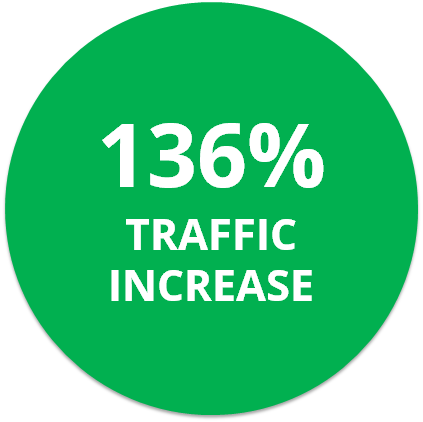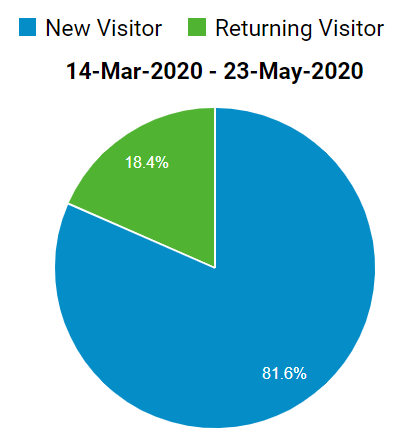In the last two months, there has been a huge increase in demand for digital content from Professional Services clients. The pressing need for information and advice from professionals has driven the highest traffic, page views and time-spent ever seen across the Passle network.
I'm not in the business of saying that "everything has changed" or suggesting that there is a dramatic new normal on the horizon but being in lockdown has meant that the face-to-face meetings, city lunches, and conferences are off the agenda, for now at least.

The graph above shows traffic across a sample of the Passle network. This is traffic to the Passle pages of top professional services firms including Deloitte, Dentons, Freshfields and many more.
The orange line shows their traffic pre-lockdown. The blue line shows post-lockdown. These firms that have responded well, have ditched platitudes and generic content for the stuff that clients really want have reaped rewards in their share of voice within the market.

We've seen a 136% increase in traffic with this content. When you look into what's driving that - its social networks and audiences sharing content on through their own networks directly.
Content that is shareable and bite-sized has outperformed longer insights accordingly. Its something that in house buyers of professional services were saying long before lockdown - bite-sized content is easier to share internally.

These firms creating the right kind of client-focused, bite-sized content pieces are reaching new audiences with their content. Over 80% of the traffic coming through is "new visitors", readers that haven't been consuming this highly specific content before.
And these people aren't reading the content and leaving, they're staying, reading the content for minutes, reading other articles, and sharing them with their colleagues. The average time on page has stayed steady at around 3 minutes, which is plenty to consume the snackable content we're talking about, with most users accessing more than one page.

New visitors aren't going to instruct a firm or purchase services based on one post. But the firms behind this approach aren't banking on that. They're converting them into subscribers and followers. These firms are gaining not just share of voice but a foothold in the inboxes of decision-makers at their most desirable prospect firms.

Viewers, traffic, and subscribers do not define success.
They are just a leading indicator that you are reaching your audience. When you combine traffic data with behavioral data such as pages per session and time on site you get a better picture. This picture is improved again when you add in job title and firm information from sources such as subscriber lists, LinkedIn, Hubspot, or Lexology.
We can't post those here for privacy reasons but I suggest you take a look at the next post on LinkedIn from an expert at a leading professional services organisation. Chances are there will be a client or potential client on the list of people that engage. Multiply that by the dozens of authors in these firms and the thousands of posts and shares and you have a powerful way of reaching exactly the people that do define success.
All of these are just indicators that you are well-positioned to win work. Reaching more of the right people, with helpful content that they value and share is just about as much as a marketing strategy can demonstrably prove - the rest is up to the people in the room.
If your experts have been informing prospects digitally far in advance, have been in their inbox, and on their social media you have a massive advantage over those that have been silent.





/Passle/53d0c8edb00e7e0540c9b34b/MediaLibrary/Images/2025-06-24-15-50-59-531-685ac963d81bf11b7522dd8e.png)
/Passle/53d0c8edb00e7e0540c9b34b/MediaLibrary/Images/2025-12-18-10-52-26-493-6943dceac311190ddba15d64.jpg)
/Passle/53d0c8edb00e7e0540c9b34b/MediaLibrary/Images/2025-12-16-15-16-25-843-694177c9190f803408651724.jpg)
/Passle/53d0c8edb00e7e0540c9b34b/MediaLibrary/Images/2025-12-09-11-05-31-284-6938027b1b6076d9d8980f1e.png)
/Passle/53d0c8edb00e7e0540c9b34b/MediaLibrary/Images/2025-12-04-20-27-35-105-6931eeb7f170698845c6b19b.jpg)



